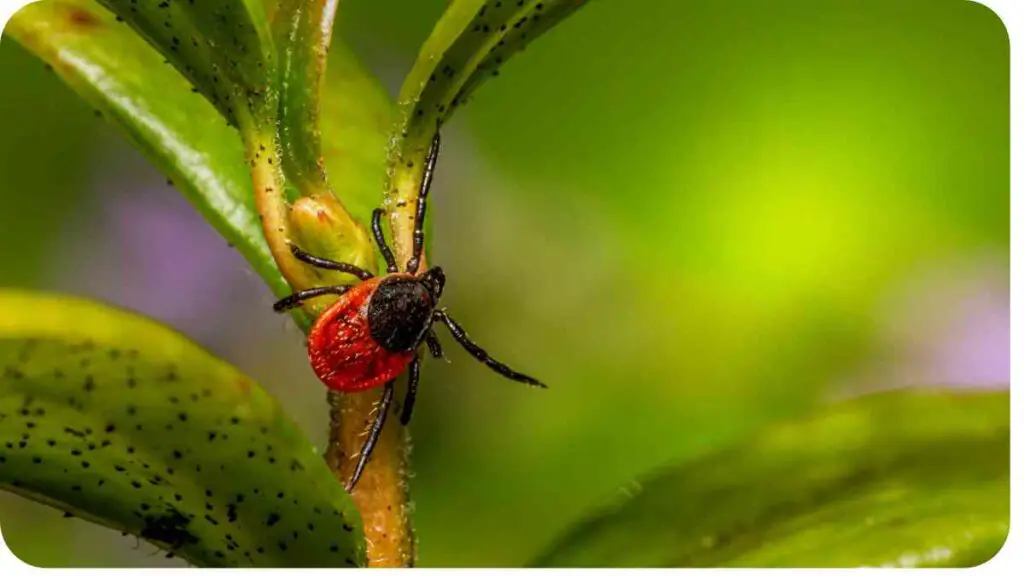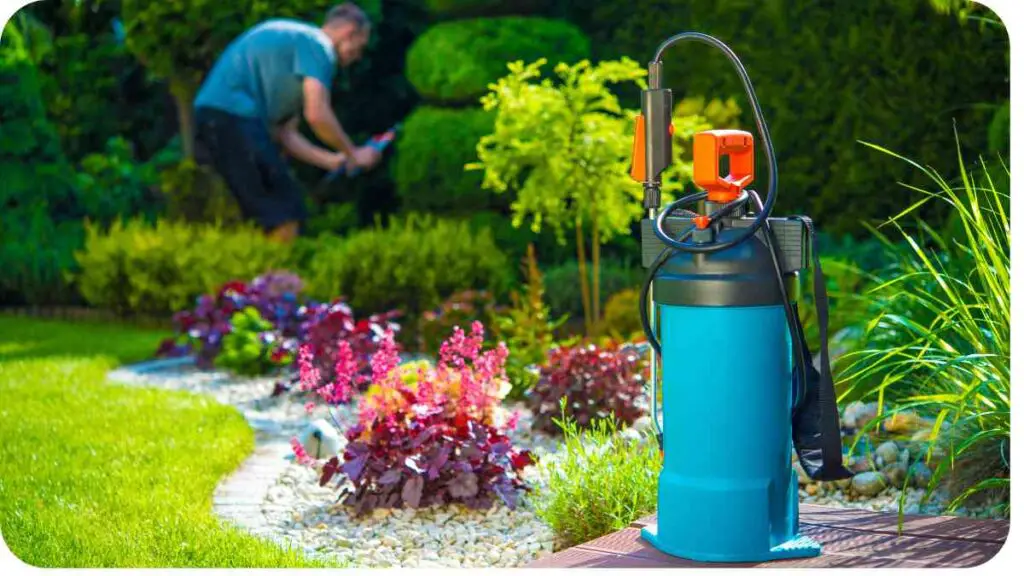Ticks can turn your beautiful flower beds into a haven for these pesky parasites. But fear not, there are effective ways to reclaim your garden and keep it tick-free. In this guide, we’ll explore the reasons behind tick infestations in flower beds and provide actionable strategies to eradicate and prevent them from returning.
| Key Takeaways |
|---|
| 1. Understanding the behavior and habitat preferences of ticks is essential for effective control. |
| 2. Preventive measures such as vegetation management and wildlife deterrents can help reduce the risk of tick infestations in flower beds. |
| 3. Natural remedies like diatomaceous earth and essential oils offer eco-friendly alternatives for tick control. |
| 4. Chemical solutions may be necessary for severe infestations, but should be used with caution and according to instructions. |
| 5. Ongoing maintenance and vigilance are crucial for sustaining a tick-free environment in flower beds. |
Understanding Ticks

Before delving into eradication methods, it’s essential to understand your enemy. Ticks are small arachnids that feed on the blood of mammals, birds, and sometimes reptiles and amphibians. They are notorious for transmitting diseases such as Lyme disease and Rocky Mountain spotted fever.
Types of Ticks Found in Flower Beds
| Tick Species | Characteristics |
|---|---|
| Deer Tick | Transmits Lyme disease; often found in wooded areas |
| Dog Tick | Larger than deer ticks; commonly found in grassy areas |
| Lone Star Tick | Identified by a white spot on the female’s back; aggressive biters |
Life Cycle of Ticks
Understanding the life cycle of ticks is crucial for effective eradication. Ticks go through four stages: egg, larva, nymph, and adult. Each stage requires a blood meal for maturation, making them a persistent threat throughout the year.
Habitat Preferences
Ticks thrive in humid environments with abundant vegetation. Flower beds provide the perfect combination of shelter and hosts for ticks to thrive, making them vulnerable to infestations.
Why Ticks Infest Flower Beds
Flower beds offer ticks everything they need to survive and reproduce. The dense foliage provides ample cover, while the presence of small mammals, birds, and other wildlife attracts potential hosts for blood meals.
Factors Contributing to Tick Infestations
| Factor | Impact |
|---|---|
| Vegetation Density | Ticks prefer dense foliage for shelter and protection |
| Wildlife Presence | Small mammals and birds serve as hosts for ticks |
| Moisture Levels | Humid environments promote tick survival and reproduction |
Ticks are opportunistic parasites, and flower beds create an ideal habitat for them to thrive.
Signs of Tick Infestation in Flower Beds

Detecting a tick infestation early is crucial for prompt intervention. Here are some signs to watch out for:
Signs of Tick Infestation
- Increased Tick Sightings: Spotting ticks crawling on plants or on pets frequenting the flower beds.
- Presence of Host Animals: Observing small mammals like mice or squirrels in the vicinity.
- Tick Bites: Finding ticks attached to your skin after spending time in the flower beds.
- Tick Eggs: Discovering clusters of tiny tick eggs nestled within the foliage.
Dangers of Tick Infestation
Tick infestations pose significant risks to both humans and pets. These parasites are vectors for various diseases, including:
Diseases Transmitted by Ticks
- Lyme Disease: Caused by the bacterium Borrelia burgdorferi, transmitted primarily by deer ticks. Symptoms include fever, fatigue, joint pain, and a characteristic bull’s-eye rash.
- Rocky Mountain Spotted Fever: Caused by the bacterium Rickettsia rickettsii, transmitted by multiple tick species. Symptoms include fever, headache, rash, and muscle aches.
- Ehrlichiosis: Caused by several species of Ehrlichia bacteria, transmitted by lone star ticks. Symptoms include fever, headache, fatigue, and muscle aches.
These diseases can have severe consequences if left untreated, underscoring the importance of effective tick control measures.
Preventing Tick Infestation in Flower Beds
Prevention is key to maintaining a tick-free garden. Implementing proactive strategies can significantly reduce the risk of infestation.
Tips for Tick Prevention
- Clear Vegetation: Regularly trim bushes and foliage to reduce tick habitat.
- Create a Barrier: Install a barrier of gravel or wood chips between lawn and flower beds to deter ticks.
- Use Tick-Repellent Plants: Incorporate plants such as lavender, rosemary, and chrysanthemums, known for their tick-repellent properties.
- Remove Wildlife Attractants: Minimize food and water sources to discourage wildlife from frequenting the area.
By implementing these preventive measures, you can create an environment that is less hospitable to ticks, reducing the likelihood of infestation.
Natural Remedies for Tick Control
For those who prefer natural alternatives, several remedies can help deter ticks without resorting to chemical interventions.
Natural Tick Control Methods
| Method | Description |
|---|---|
| Diatomaceous Earth | Sprinkle food-grade diatomaceous earth around flower beds to dehydrate and kill ticks on contact. |
| Essential Oils | Apply diluted essential oils such as cedar, eucalyptus, or peppermint to repel ticks. |
| Beneficial Nematodes | Introduce beneficial nematodes to the soil, which feed on tick larvae and help control populations. |
These natural remedies offer effective alternatives for those seeking eco-friendly tick control solutions.
Chemical Solutions for Tick Control

In cases of severe infestation or where natural methods prove insufficient, chemical solutions may be necessary.
Chemical Tick Control Products
- Tick Control Sprays: Use insecticide sprays specifically formulated to target ticks in flower beds.
- Tick Tubes: Place tick-killing tubes containing treated cotton in strategic locations to eliminate ticks.
When using chemical solutions, always follow manufacturer instructions carefully to ensure safety and effectiveness.
Maintaining Tick-Free Flower Beds
Once you’ve eradicate ticks from your flower beds, it’s essential to maintain vigilance to prevent reinfestation.
Maintenance Tips for Tick-Free Flower Beds
- Regular Inspection: Routinely inspect flower beds for signs of tick activity.
- Remove Debris: Clear away leaf litter and debris where ticks may harbor.
- Monitor Wildlife: Keep bird feeders and pet food away from flower beds to minimize wildlife attraction.
- Reapply Treatments: Follow up with natural or chemical treatments as needed to sustain tick control.
By staying proactive and diligent, you can enjoy a tick-free garden year-round.
Conclusion
Tick infestations in flower beds can pose health risks and detract from the enjoyment of your outdoor space. However, with the right strategies and interventions, you can effectively eliminate ticks and prevent their return.
Whether you opt for natural remedies or chemical solutions, maintaining a tick-free environment requires ongoing effort and vigilance. By implementing preventive measures and staying proactive, you can reclaim your flower beds and enjoy a safe and pest-free outdoor oasis.
Further Reading
- Smith’s Pest Management: How to Get Rid of Ticks: This comprehensive guide offers additional tips and insights on effectively eliminating ticks from your outdoor spaces.
- GardenTech: Protecting Your Lawn and Garden Against Ticks: Learn about preventive measures and products to safeguard your lawn and garden from tick infestations.
- Sawyer Garden Center: 6 Ways to Keep Ticks Out of Your Yard Naturally: Discover natural solutions for keeping ticks at bay and maintaining a tick-free yard.
FAQs
How do ticks infest flower beds?
Ticks infest flower beds by seeking out dense foliage for shelter and host animals for blood meals. Flower beds provide an ideal habitat for ticks to thrive.
What are the signs of tick infestation in flower beds?
Signs of tick infestation include increased tick sightings on plants or pets, presence of host animals like mice, tick bites, and clusters of tick eggs within the foliage.
What diseases can ticks transmit?
Ticks can transmit diseases such as Lyme disease, Rocky Mountain spotted fever, and Ehrlichiosis, posing health risks to humans and pets.
What are some natural remedies for tick control?
Natural remedies for tick control include diatomaceous earth, essential oils like cedar and peppermint, and beneficial nematodes that feed on tick larvae.
Are there chemical solutions for tick control?
Yes, chemical solutions such as tick control sprays and tick tubes can be effective for eliminating ticks from flower beds. Always follow manufacturer instructions for safe use.

For 15 years, Hellen James has worked in the gardening industry as an expert and landscape designer. During her career, she has worked for a variety of businesses that specialize in landscaping and gardening from small firms to large corporations.

